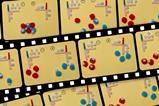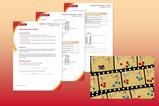Modelling your own approach to a topic helps students learn how to do it
I do, we do, you do: it’s not a new-fangled teaching technique. But how do you model? And how does it help students become better thinkers? There is plenty of advice in the EEF Improving secondary science guidance and it is easy to implement in the classroom.
7 simple rules to boost science teaching
Click to expand and explore the rules
Build on the ideas that pupils bring to lessons
Help pupils direct their own learning
Use models to support understanding
Support pupils to retain and retrieve knowledge
- Pay attention to cognitive load—structure tasks to limit the amount of new information pupils need to process
- Revisit knowledge after a gap to help pupils retain it in their long-term memory
- Provide opportunities for pupils to retrieve the knowledge that they have previously learnt
- Encourage pupils to elaborate on what they have learnt
Use practical work purposefully and as part of a learning sequence
Develop scientific vocabulary and support pupils to read and write about science
Use structured feedback to move on pupils’ thinking
Modelling depends on the task. I have used modelling to help my physical chemistry classes get to grips with calculations, and my GCSE physics group with attempting six-mark questions. I find it helps to read examiners’ comments to understand the mistakes students regularly make and build my lessons around them.
Technology plays an important part; annotating PowerPoint or pdf documents. Using a visualiser is also helpful. Feedback from students has made me think about how this methodology has been effective.
One A-level student said, ‘listening to you model how to tackle mathematical questions makes us think about why you are doing it that way.’ Another said, ‘it helps us understand how to break down the question.’

What it looks like in the classroom
I do: This involves explicit instruction. Think about how you are going to get the information across – consider the outcomes when planning. The key is ‘thinking aloud’ – making sure you know what you are going to say; you could refer to a set of written questions. Students listen throughout and can ask questions about ‘why’ at the end.
We do: Give a similar question to the class and work with them to break down the question, asking specific students (cold calling) questions such as ‘what is the first thing we need to remember?’, ‘why do we do this step?’, ‘what do we need to think of here?’ and ‘how will you remember the steps?’.
You do: Provide more questions so students can work independently. Then introduce peer assessment. Perhaps go back to ‘we do’ and get students to demonstrate how they tackled the question.
After the January mocks, GCSE students asked me to model writing a method for a physics practical. I realised they did not understand what ‘planning’ involved and could not relate the skills developed in their English lessons to the task of writing a plan for experiments. One student asked, ‘But how would you plan in the exam when you are limited by time?’
I produced a PowerPoint (download it below) to introduce different planning formats – hexagons/flow charts/mind maps – using some ideas from EduTwitter from @TeamScienceEdu and @MrsSingleton. This led to more ‘thinking aloud’ and modelling a practical. Students realised that the planning tools could be used when revising so they would then have the knowledge to recall details in their examinations.
Download a resource to help you model answering a six-mark question and approaching a required practical with your students as MS Powerpoint or pdf.
If you don’t have an interactive board, use a visualiser. Using a visualiser allows you to face your students as you write and talk – they can hear you clearly (I miss the good old days of OHPs!). They can also see how you use the space available when highlighting/planning.
It takes time for students to start thinking about how they should think when tackling exam questions, but it results in huge improvement in both their confidence and results when using this method of teaching.
Things to think about when planning
- What do they need to be able to do?
- What do students need to think about?
- What are the key steps? Why are they important?
- What are the common mistakes that students make?
- What questions should I ask to help students think about the process?
This article is part of the series 7 simple rules for science teaching, developed in response to the EEF’s Improving secondary science guidance. It supports rule 2b, Model your own thinking to help pupils develop their metacognitive knowledge.
Downloads
Modelling for students
PowerPoint, Size 0.16 mbModelling for students
PDF, Size 80.34 kb















No comments yet